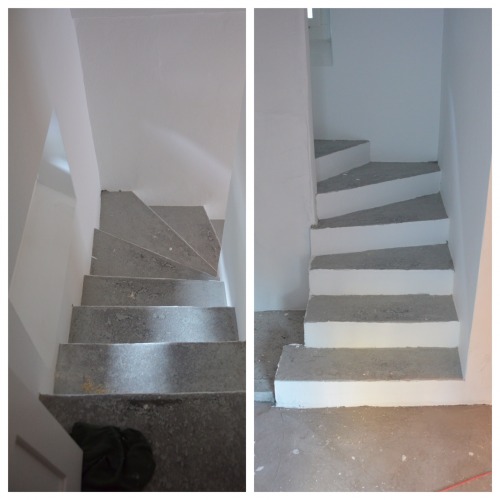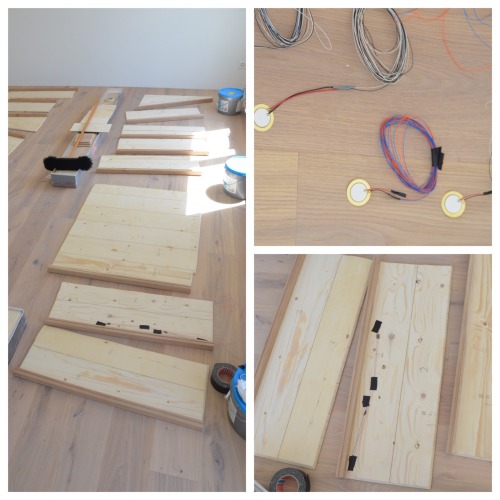When I first stumbled over the "furniture with feelings" inside the Heart of Gold in the Hitchhiker's Guide to the Galaxy story - the idea of such a furniture seemed a far-away useless utopic feature. Why should a furniture get emotional? What's the point?
But now, building and renovating my own house, the idea of such furniture came back into my mind. What if some immobile parts of the house can be robotified so that they can interact with us humans.
So I gave it a try: Build a stair that can react on humans and act emotional.
Emotion
This stair-robot must be able to express emotions so that we human can understand it and get the chance to react accordingly. The stair must be functional and let us go up and down. It can be emotional and give light when nessessary, more light if the stair feels it is needed, show that it is time to play when the kids come.
Image-Source: Wikipedia
Currently the only way to express the emotion is via light. Every step of the stair has its own light that is controlled individually. The light can be dimmed and all lights together can orchestrate to express the emotion the stair is in.
The stair shall express joy, boredom and interest.
The Making
Since I wanted to pimp the basement stair with steps of elk wood I had the chance to embed some sensors.
The small piezo seemed to be a straight forward solution to detect someone stepping on the stair. So I built some prototypes to find out how to fix the step without loosing the ability to detect pressure.
Whenever the pressure onto the sensor was to strong, the sensor's signal went up and down and made no sense. So it is important to set the sensor that it touches the wood but not under pressure. Just softly squeezed between the glue and the wood. That works.
The results where not perfect but good enough to then fine-calibrate every sensor after the build is finished.
I prepared two sensors per step. 17 steps.
The carpenter glued the stair and I wired them.
The first system-test was successful. Lights on/off basic feature works.
In the picture above you can see the cables that come out of the wall. All these cables must come together and go into the ceiling to the controller. Then the cables must be hidden behind some sort of cabinet on the wall.
The Code
More to come. Standby.
Further Readings
-
Arduino Mega
PWM: 2 to 13 and 44 to 46. Provide 8-bit PWM output with the analogWrite() function. -
Light Fading
This example shows how to fade an LED using the analogWrite() function.
Interacts with humans
- Actuators / output devices: led-strip
- Control method: autonomous
- CPU: Arduino Uno R3
- Power source: Wall adaptor
- Programming language: Arduino C++
- Sensors / input devices: Piezo Vibration Sensor
- Target environment: indoor
This is a companion discussion topic for the original entry at https://community.robotshop.com/robots/show/stairbot-f7








 Well done Nils. Do you also want to detect if somebody is going up or down the stairs and depending on that showing some different light pattern?
Well done Nils. Do you also want to detect if somebody is going up or down the stairs and depending on that showing some different light pattern?